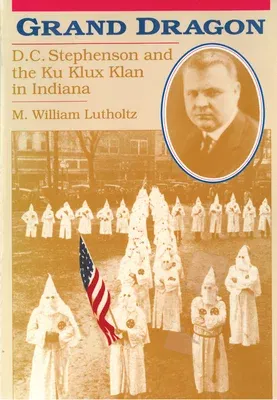Who was the man who could proclaim with arrogant self-confidence, "I am
the law in Indiana, " and how did he and the Ku Klux Klan rise to a
position of power unparalleled in other states? Why was the Klan so
powerful in a northern state such as Indiana? The Ku Klux Klan reached
its height in the 1920s, and nowhere was it as large and politically
powerful as in Indiana, where about 30 percent of the native-born white
male population were klansmen. This book explores the career of D. C.
Stephenson, grand dragon of the Indiana Klan, his rise to power, and his
eventual conviction for second-degree murder in 1925. Grand Dragon
traces Stephenson's background, still shrouded in mystery due to
Stephenson's own colorful but imaginary accounts of his early years. A
political opportunist, Stephenson's rise to power in the Klan was
startlingly swift, but so was his fall from grace. Tried in Klan country
for the rape and murder of a young government worker, Stephenson was
convicted and imprisoned for a crime of which some still consider him
innocent. The cornerstone of Lutholtz's narration is his account of
Stephenson's trial, for which the 2,347-page court transcript has been
missing for thirty years. Lutholtz has painstakingly culled material
from archives and newspaper accounts to re-create the trial in all its
dramatic detail. A model of investigative reporting, Grand Dragon
captures the reader with its skillful narration and compelling story. It
also raises troubling issues for the modern reader: Was Stephenson
guilty of the crime for which be was imprisoned? Why was membership in
the Klan so widespread in the 1920s? What are the dangers of charismatic
leadership? And why is this disturbingchapter of Indiana history not
better known?


